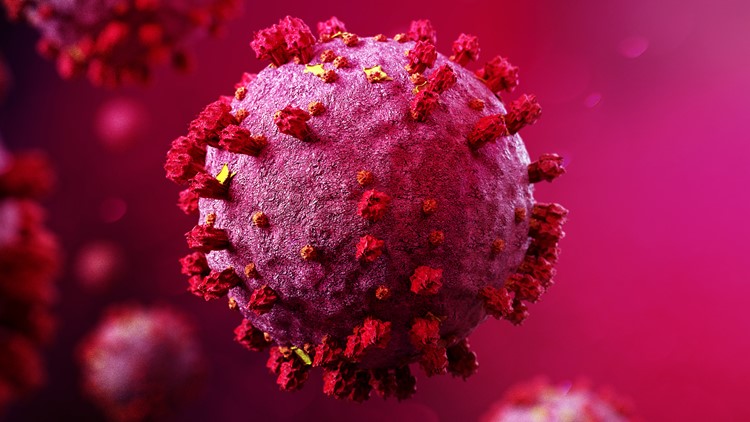NEW YORK — A summertime wave of COVID-19 infections is arriving earlier than last year across a growing share of the country, federal data suggests, as a new variant called LB.1 could be on track to become the latest dominant strain of the virus.
For the first time in months, the CDC estimates that no states or territories are seeing COVID-19 infections slow this past week. Key virus indicators appear to be worsening fastest across a number of western states, where trends first began climbing this month.
Levels of virus detections in wastewater from the western region, often an early signal of rising COVID-19 cases, are already near the threshold the Centers for Disease Control and Prevention deems to be "high" levels of infection risk. Nursing home COVID-19 cases had also accelerated in recent weeks from this region.
An average of 1.23% of emergency room visits were from COVID-19 patients in HHS Region 9, a grouping of states that spans Arizona through Hawaii. This is now the worst average of COVID-19 emergency room visits in the region since early February.
Since early during the pandemic, authorities have tracked surges of COVID-19 after a springtime lull in cases, though at different times during the warmer months.
Last year's increase did not begin to pick up nationwide until late July. Trends of the virus in emergency rooms peaked around the end of August and early September, right as officials were gearing up to roll out a new COVID-19 vaccine shot.
"For flu and for RSV, we have years and years of data with very similar trends over time. So, you can't quite set your watch by when those seasons are going to start, but you can get close. For COVID, that's not true at all," Ruth Link-Gelles, head of the CDC's COVID-19 vaccine effectiveness research, said this month at a Food and Drug Administration meeting.
The rise of LB.1 and KP.3 variants
COVID-19 cases are picking up at the same time that the CDC says it is tracking two new variants growing in proportion nationwide. Scientists call them KP.3 and LB.1.
KP.3 has reached roughly a third of cases nationwide, up from 25% two weeks ago, and LB.1 makes up 17.5% of cases, as of the CDC's "Nowcast" projections published Friday.
Both are displacing a close relative, a so-called "FLiRT" variant called KP.2, which had risen to dominance last month. The CDC's projections so far have LB.1 starting to grow at a faster rate than KP.3, suggesting LB.1 might overtake KP.3.
All three of these variants share a common ancestor in the JN.1 strain that drove a wave of cases last winter.
"We've seen descendants of that moving along, that's KP.2, KP.3 and LB.1. So these other new variants, these came up relatively quickly. I wouldn't say they caught us by surprise, but because they happened relatively quickly, we had to react," the FDA's Dr. Peter Marks said Friday.
Marks was speaking at a webinar hosted by the group Champions for Vaccine Education, Equity and Progress, defending the agency's move this month to pick KP.2 as the strain for Moderna and Pfizer's updated shots this fall.
That had reversed an earlier decision to recommend shots for JN.1, as a panel of the FDA's outside advisers had favored instead. At the time that the panel was picking between the two variants, there was significantly more data on picking JN.1 as the shot for the fall.
Switching to KP.2 instead was not based on "iron-clad evidence," Marks conceded, but officials hope it will offer at least a marginal improvement over shots aimed at the older variant.
"There's probably some degree of cross-protection, but the optimal protection probably involves making sure we get closest to what is actually circulating now," he said.
Since the FDA's meeting, the CDC has begun to track KP.3 and LB.1's rise to overtake KP.2.
It is not clear whether the CDC has observed any changes in KP.3 or LB.1's severity, as it has tracked for some past new variants. A spokesperson for the agency did not immediately respond to a request for comment.
Early lab data from scientists in Japan, which were released this month as a preprint that has yet to be peer-reviewed, found one of LB.1's mutations — a change called S:S31del, which KP.3 and JN.1 does not have — could enable it to spread faster.



